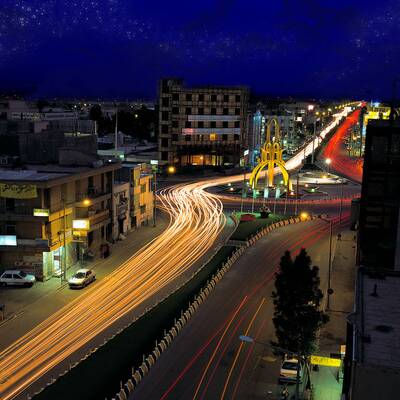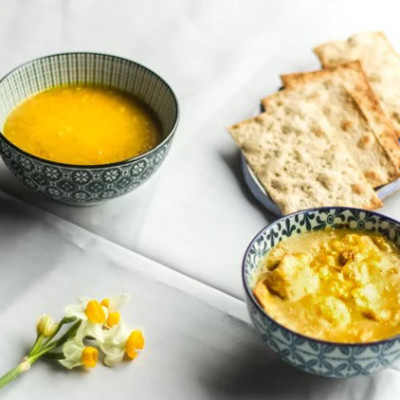Sistan and Baluchestan Province is located in the southeast of Iran and is the second largest province in Iran after Kerman.
History
According to some accounts, the name Sistan is a variation of Sejestan or Sakastan, which means the land of the Scythians. The Scythians were a people who migrated to the area around the Helmand River about 2500 years BC. This land is mentioned in Ferdowsi's Shahnameh as the birthplace of Rostam.
The existence of ancient historical monuments such as the petroglyphs related to the hunting and pre-language period around the Sangaki hill in Saravan city, indicate a long history of human settlement in this region.
Geography
About 65% of the population of this province is under 30 years old. Therefore, Sistan and Baluchestan is the youngest province in the country. Also, as its name suggests, the province consists of two parts, Sistan and Baluchestan, which are completely different in terms of natural conditions. The Sistan region is located in the northern part of the province and is a flat area consisting of old and new alluvium of the Helmand River. The Baluchestan region is a mountainous region that borders the Lut desert to the north and the Oman Sea to the south.
The province is bordered by South Khorasan to the north, Kerman and Hormozgan to the west, Oman Sea to the south, Afghanistan and Pakistan to the east.
Climate
Some of the notable weather phenomena of Sistan and Baluchestan province include severe seasonal winds, sandstorms, torrential rains, high humidity, and morning fog. Since the warm season is longer than the cold season and the minimum temperature rarely reaches zero degrees Celsius, it is possible to grow plants in its irrigated lands almost all year round.
Cities of Sistan and Baluchestan Province
Sistan and Baluchestan Province consists of 22 cities, including Zahedan, Zabol, Iranshahr, Chabahar, Qasr-Qand, Doost Mohammad, and Saravan.
Zahedan
Zahedan is the capital city of Sistan and Baluchestan province with a population of over 580,000, making it the twelfth most populous city in Iran. Zahedan has a hot and dry climate and the 120-day winds have a significant impact on its temperature.
Before World War II, this city was a small village called "Dozdab" until 1308 SH when its name was changed to Zahedan.
Some of the tourist attractions of Zahedan include the roofed bazaar, the old courthouse building, Malakeh warehouse, Ayubi house, Nosrat Abad caravanserai, Zaranj mosque of Zahedan, Shah Ali Mosque, Southeast Iran Regional Museum, as well as Post and Telecommunications Museum.
Zabol
Zabol county is one of the important border cities of Iran. The Museum of Anthropology, Takht-e Edalat, Kuh-e Khwaja (30 km away from Zabol), the Burnt City (Shahr-e Sukhteh), Farangi caravanserai, and Gholaman gorge are some of the tourist attractions of this city.
Iranshahr
Iranshahr is located in the center of the Baluchestan region and is 345 kilometers away from the provincial capital. This city is known as the city of 72 nations, where the main ethnic groups living include Birjandi, Sistani, Turk, Lor, Kurd, Shomali, Isfahani, Yazdi, and Kermani.
When visiting Iranshahr, you can see Naseri Castle, Daman River, and the house of Ayatollah Khamenei during his exile.
Chabahar
Chabahar county consists of two cities, Chabahar and Negur. Due to its location on the Makran Sea and the Indian Ocean, fishing is one of the main economic infrastructures of the province.
Traveling to this port is better in the cool autumn, winter, and early spring.
The Martian Mountains, which are about 5 million years old, are one of the wonders of Iran. These white and gray mountains resemble pictures of Mars from a distance. The Martian Mountains are located on the Chabahar to Bandar Gavater. The Pink Coast, which has acquired its color due to the presence of plankton and the Oman Sea currents, is also one of the natural attractions of Chabahar county; Visit the Gol Afshan mud volcano, explore the village of Tis and the Portuguese Fort, watch the sunset over the dhows at the Beris fishing pier, and enjoy fishing in the Oman Sea.
Qasr-Qand
Qasr-Qand is known as the city of sugarcane. Sugarcane cultivation became prevalent in this city during the Portuguese invasion. The name Qasr-Qand is also derived from the cultivation of sugarcane there, which is the raw material for producing sugar.
Some of the historical and tourist attractions of this city include the Qasr-Qand Castle, the Bog historical castle, and the Talang castle.
Dost Mohammad
The center of Dost Mohammad County is the city of Hamoun. In the past, the main tourist attraction of this city was the Hamoun Lake, the third largest lake in Iran. However, due to the water crisis, today only the remains and the dry bed of the lake can be seen. The Karakuyeh fire temple is another attraction of Dost Mohammad County.
Accommodations
Some of the most well-known hotels in Sistan and Baluchestan province include Esteghlal Hotel, Jahangardi Hotel in Zahedan, Amin Hotel in Zahedan, Laleh International Hotel, Lipar Hotel, and Sepid Hotel.
In addition, various ecolodges are available to tourists in different parts of the province. Among the most important of these ecolodges are the Manzelab ecolodge in Manzel Ab, Zahedan, and the Kolbeye Aaramash ecolodge in Ghaleh No village, Zehak.
Restaurants
Baluch Restaurant in Chabahar county is one of the places where local foods of the province are served. In addition, there are many other restaurants in the province, among which Tehrani Restaurant in Chabahar, Mellal Restaurant in Zahedan, and the Khalij beachside Restaurant are the most well-known.
Local foods
One of the main local dishes of Sistan and Baluchestan province is Kashk-e Zard (yellow kashk). It is a nutritious food from the city of Zabol that is usually consumed as breakfast in cold winter days. The main ingredient of this dish is a type of homemade yellow kashk.
Zaboli Oojizak and Sistani stew are also among the famous dishes of Sistan and Baluchestan province. Sistani stew is cooked with special spices so that it has its own unique aroma and flavor.
Souvenirs
As mentioned before, Sistan and Baluchestan is one of the largest fishing centers in Iran where fish and shrimp can be purchased as souvenirs. Landor sweets, which is a souvenir of Zabol city, is one of the most famous sweets of this province. Needlework, coin embroidery, mirror embroidery, and pottery are other souvenirs of Sistan and Baluchestan province.
Handicrafts
Among the most important handicrafts of Sistan and Baluchestan province, we can mention needlework by the people of Iranshahr city, cream embroidery in the villagers of Zabol, Pariwar embroidery in Iranshahr, mat weaving in Nik Shahr, pottery in Iranshahr, and black embroidery in Khash County. Coin and mirror embroidery is also one of the handicrafts of the province that is usually seen in the dowry of most Sistan and Baluchestan girls.
Customs and Traditions
In addition to Nowruz, Eid al-Qurban and Eid al-Fitr are also of special importance in Sistan and Baluchestan province. On these holidays, people gather in Eidgah wearing new clothes, pray Eid prayers, and then visit their relatives.
One of the customs of the engagement period among the people of Sistan and Baluchestan is that on holidays such as Eid al-Qurban, Eid al-Fitr, and Nowruz, the father of the bride invites the groom to the house and after the party groom gives a sheep and an amount of money as a gift to the bride's family.
People also make a sweet called Chalbak on religious holidays when they go to the cemetery. The sword dance, which is one of the oldest epic dances in the country, also belongs to this region.

